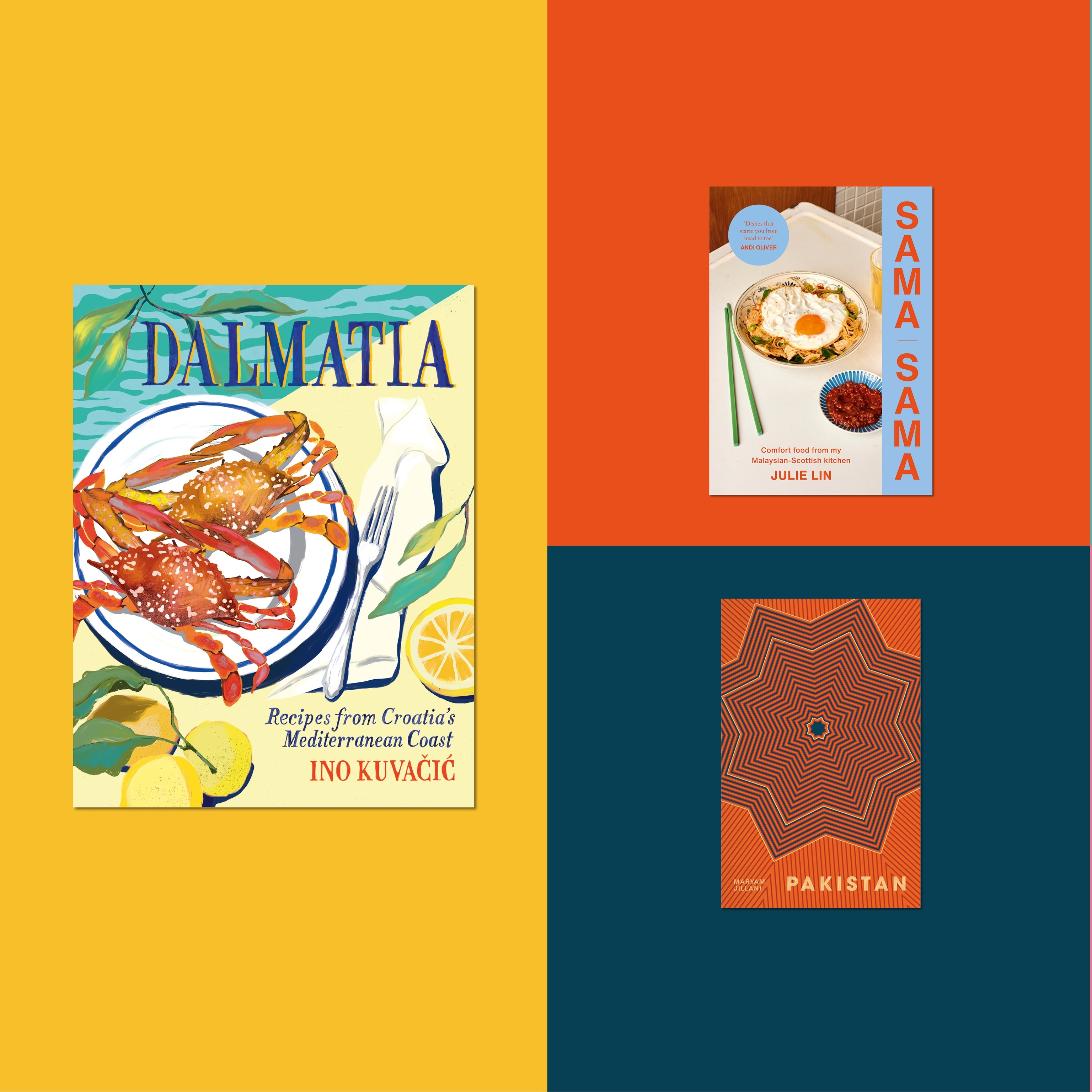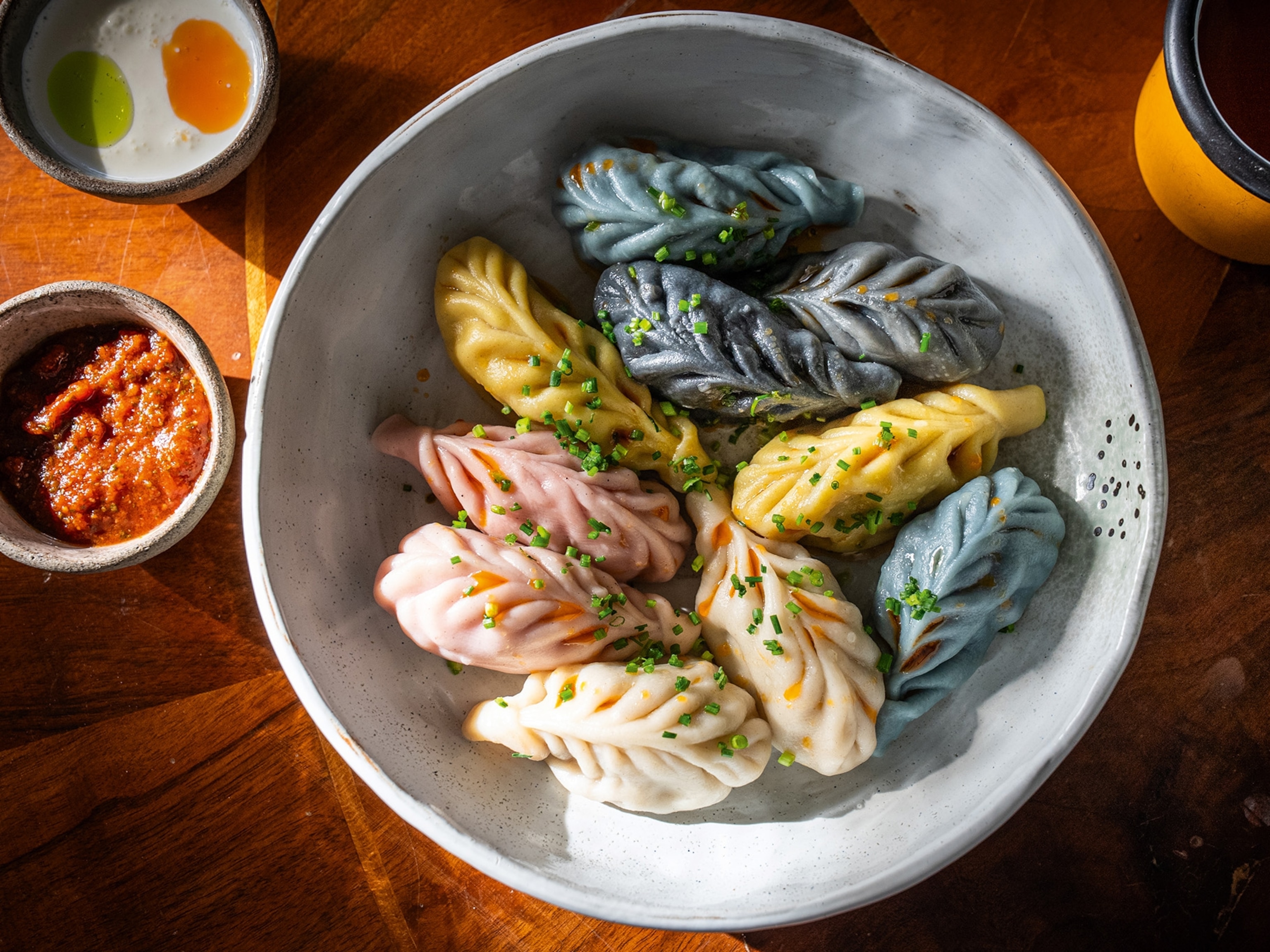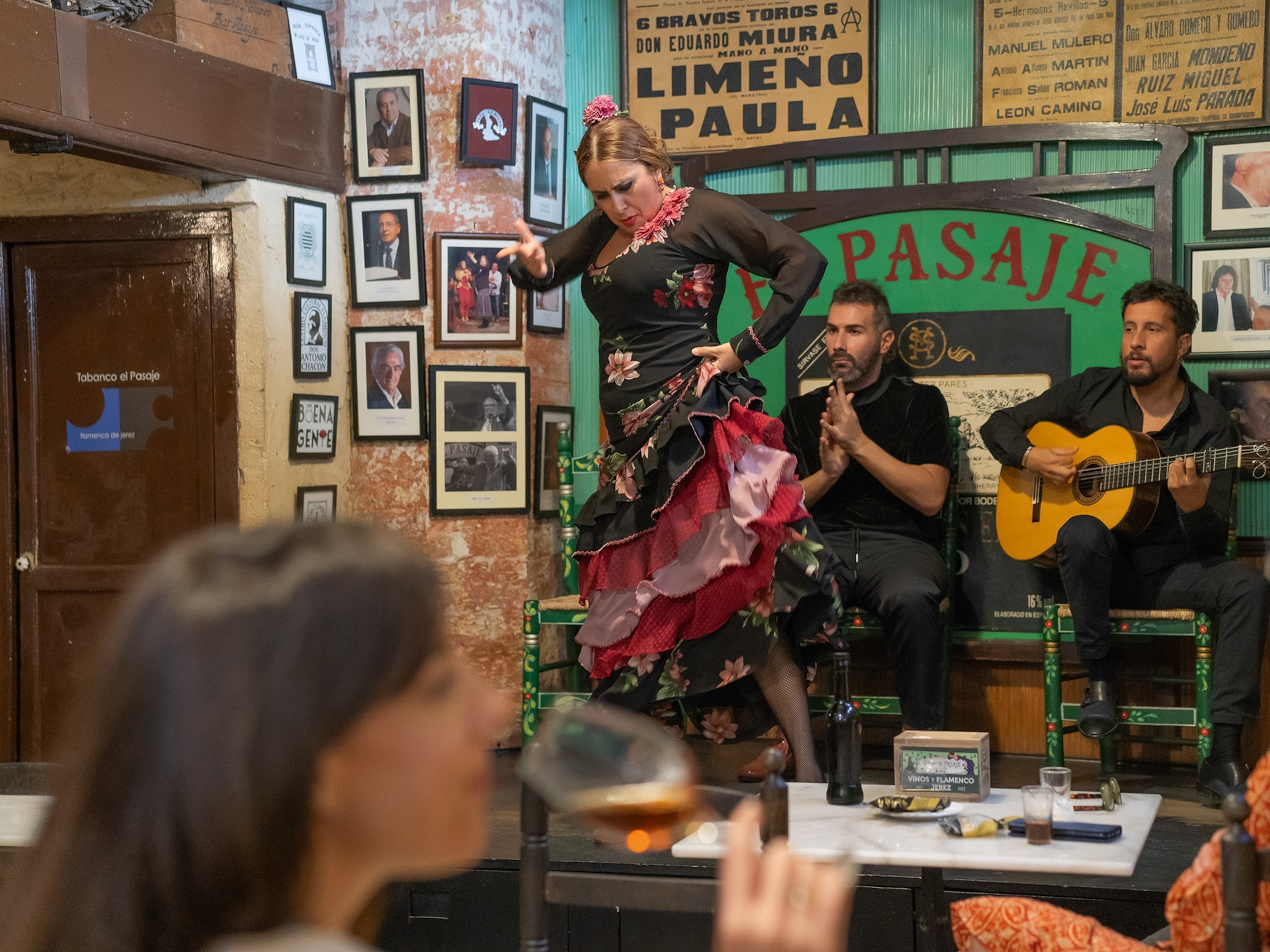
Paprika, peppers and plums: experiencing a family meal in Budapest
At their daughter's apartment in the Buda side of Budapest, Gábor Merfelsz and Krisztina Arató dish up a paprika-tinged feast, with homemade sausages and Hungarian strudel on the menu.
Like a cross between a scone and an American biscuit, the pogácsa is a Hungarian staple, commonly made with either cheese or potato and usually consumed with a cup of coffee. It’s a morning ritual I’ve come to relish during my time in Budapest. Yet I’ve never had one like this before, laced, as it is, with wild onion. Despite having devoured a pastry mere minutes before, I take a greedy bite, and then another.
(What Are Sugar Plums Anyway?)
It’s Saturday morning, and the Fény Street Market buzzes with shoppers loading up for the weekend. This glass-roofed hall, located in leafy Buda, on the west side of the Danube, is packed with vendors selling fruit, vegetables, meat, fish and, of course, pogácsa. Mine was a treat from local couple Gábor Merfelsz and Krisztina Arató, who couldn’t resist the pogácsa while shopping for sourdough bread at a bakery on the first floor. “We’ve been so busy cooking, that we didn’t have a chance to eat breakfast,” says Krisztina, as the crumbs flutter to the ground around us.
The sourdough will be part of today’s lunch, and we’ve come to the market to snag a few final ingredients, which Gábor tosses into a picnic basket while I pore over the array of vegetables on display, from carrots and tomatoes to vibrant red radishes and bulbs of garlic. Although I’ve lived in Budapest for eight years, it’s always throwing up surprises, and I resolve to visit this particular market more often.
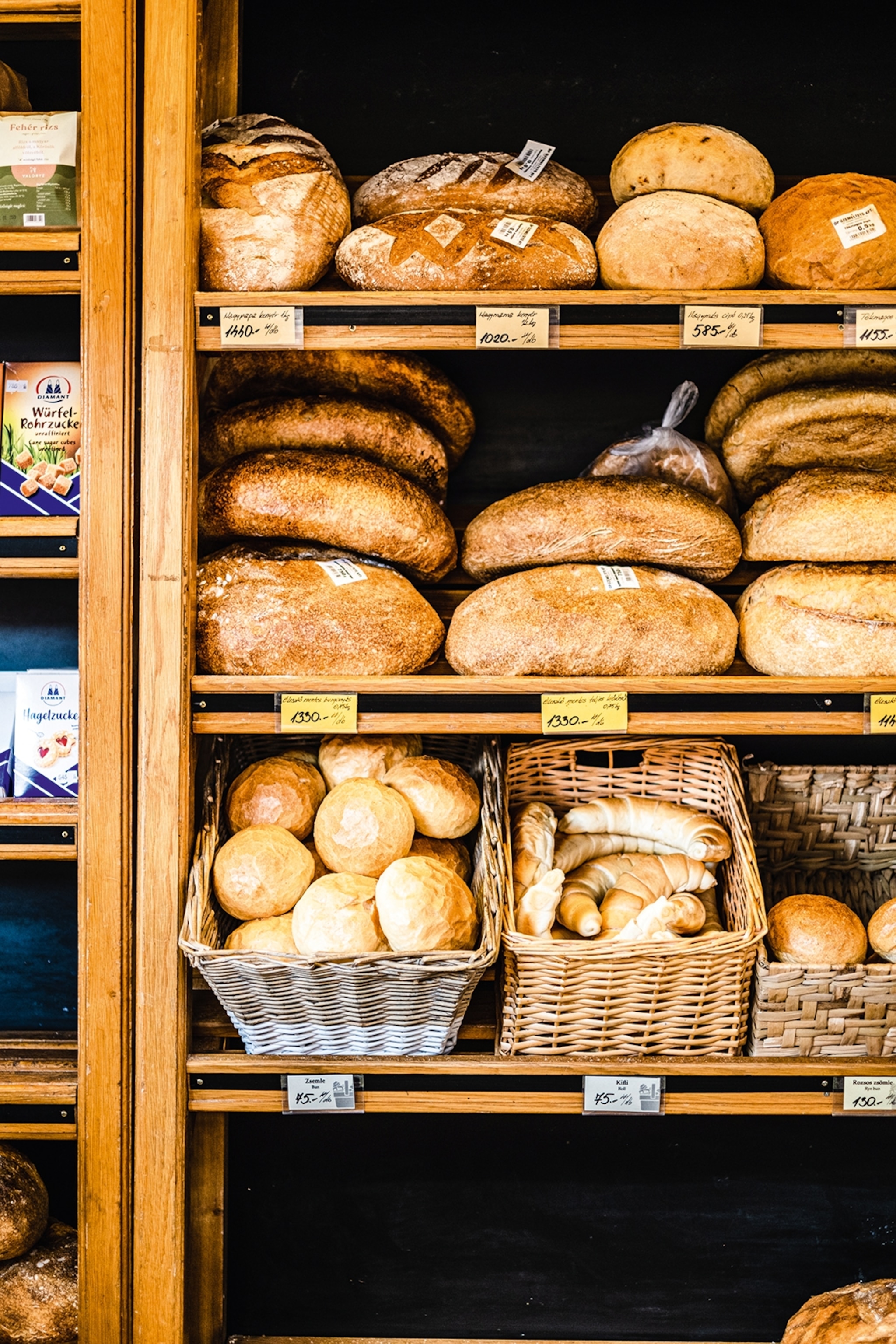
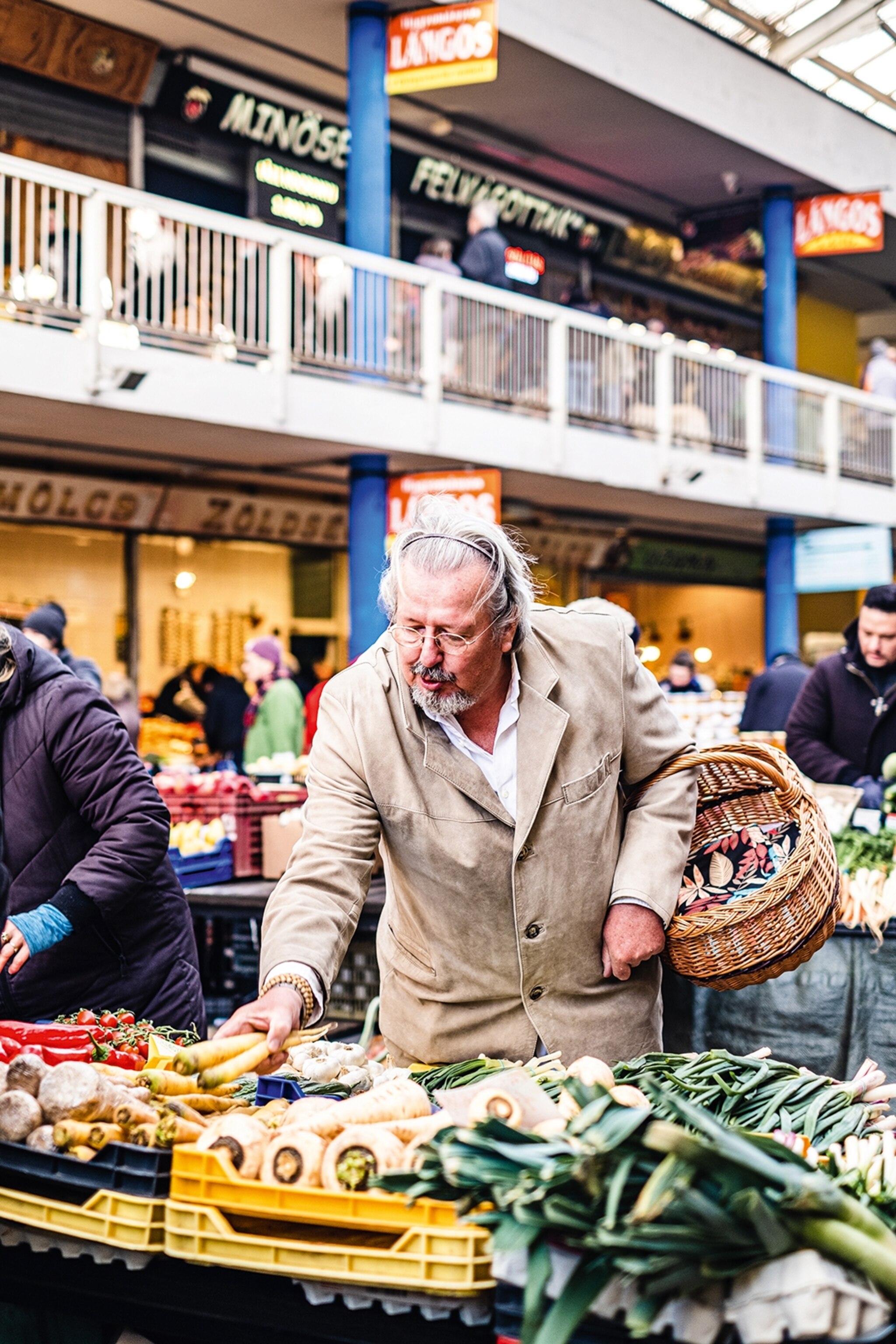
Having stocked up, we make the 10-minute walk to the spacious apartment that’s home to Krisztina’s daughter, Fanni Bakos-Blumenthal, and her husband András Csernóczki. Part of an old converted building, the apartment is flooded with natural light and has a terrace off the dining room. Before long, we’re joined by Krisztina’s nephew, Misi, a precocious 14-year-old with a curious palate, as well as family friend Dani Dévényi, who co-owns popular tapas restaurant UnoMas.
Gábor and Krisztina retreat to the kitchen, while Ella — their four-year-old granddaughter — energetically works her way through jigsaw puzzle after jigsaw puzzle. Her brother, Emil, turns one tomorrow, and I catch sight of several balloons tucked away in his parents’ bedroom as I pass the half-open door through the hallway.
The apartment’s dining and living room organically flow into one convivial space — and with the well-stocked bar, piano and numerous books and antiques, there’s a certain elegance about it all. A lot of this is down to Fanni’s discerning taste — formerly the head of PR at the Four Seasons Hotel Gresham Palace Budapest, she now runs a consultancy specialising in luxury brands. András, meanwhile, runs his own production company — a vintage cinema light and framed film poster on the wall a nod to his line of work.
As for Gábor and Krisztina, their business is wine. They divide their time between Budapest and Gábor’s home city of Szekszárd, which is located in a region of southern Hungary known for its red wines; it’s one of only two locations in the country allowed to designate its blends as bikavér, or bull’s blood. “Szekszárd is a place I’ve always loved,” says Gábor. “My grandparents had a csárda [tavern] outside of the city and they planted their own vineyard with the kadarka grape. It was a magical time for me as a child, seeing the harvest and exploring the cellar.”
Having spent 30 years working in the banking sector (along with spells as a frontier guardsman), in 1999, Gábor took the plunge and founded the Merfelsz Winery with Krisztina. Today, it produces several lush reds and has a cellar that dates back to 1832. I’m delighted to learn he’ll be pouring some of his wines with lunch.
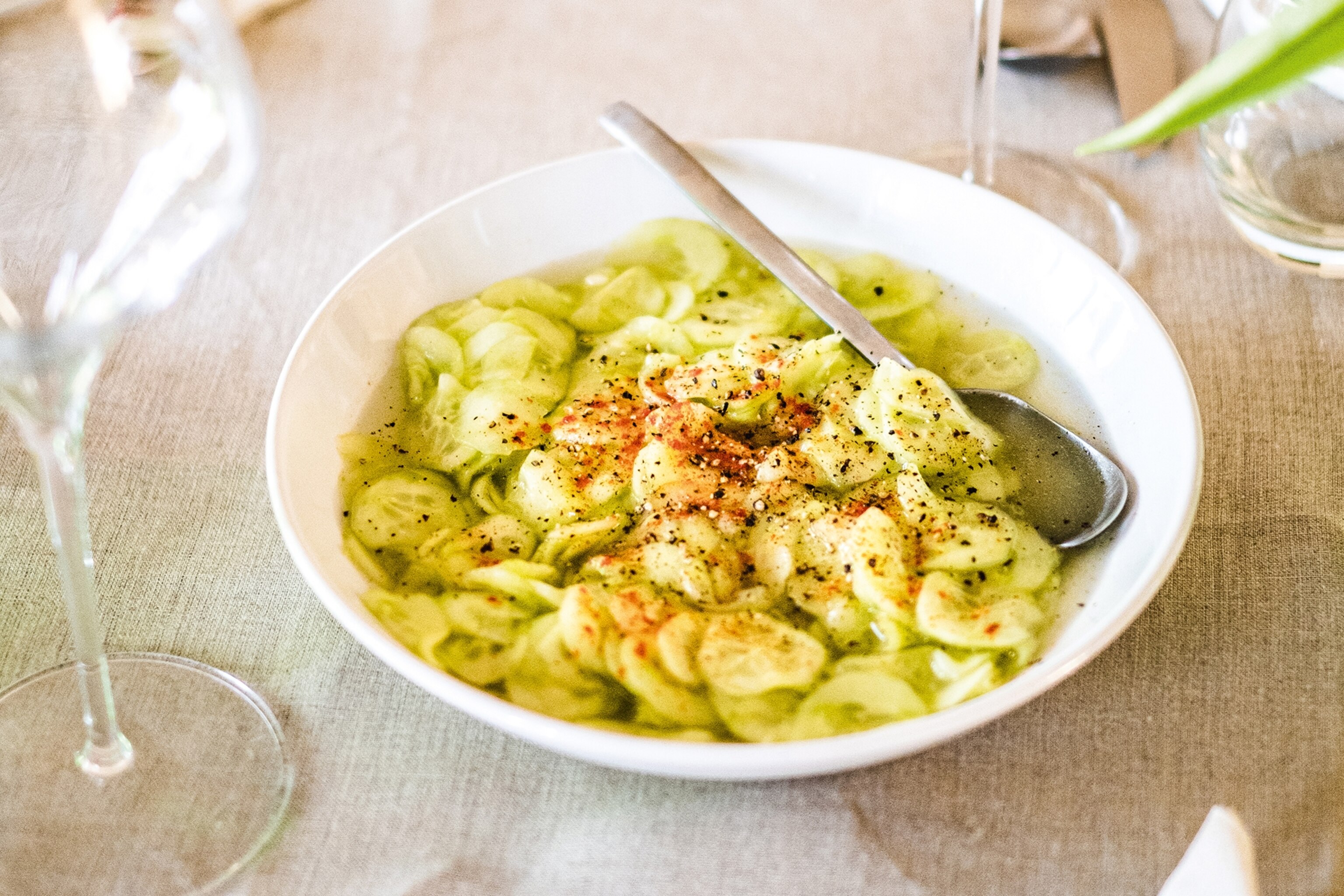
As we discuss Szekszárd, a bowl of uborkasaláta (cucumber salad) makes its way to the table, to be eaten out of blue bowls as a side. It’s liberally dusted with paprika, Hungary’s beloved spice first introduced by way of Ottoman-era Turks, which is made from the dried, ground red peppers grown in abundance in an area surrounding the city of Szeged and the town of Kalocsa. In Budapest, it’s an ingredient that’s impossible to avoid — you’ll find it in countless traditional dishes, from gulyás (goulash) and halászlé (fish soup) to töltött káposzta (stuffed cabbage) and, of course, csirkepaprikás (chicken paprikash).
In the kitchen, our starters are being prepared — slabs of cold confit duck liver, piled on toasted brioche and topped with a generous sprinkling of crushed pistachios. But the part of the menu I’m most looking forward to is the minced pork belly sausage that Gábor has made from scratch, flavoured with garlic, cumin and, of course, paprika. “I started preparing my own sausages about five years ago because I wasn’t happy with the other recipes that I was tasting,” he explains.
As the meaty spiral browns in the oven, Gábor turns his attention to the lecsó, a Hungarian speciality that resembles ratatouille. There are various regional interpretations of this velvety vegetable ragout, but Gábor’s is distinctly meaty. He starts by neatly cutting smoked bacon into cubes, which he fries until they release a glimmering pool of fat. He then removes the bacon and briefly adds thin discs of sausage to the sizzling liquid, before stirring in onions, peeled tomatoes and peppers. “You want to have as many different kinds as possible,” Gábor says of the peppers, before adding tomato and sweet paprika pastes plus dried paprika powder. In some versions, the bacon cubes and sausage are scatted over the lecsó, but Gábor serves these in separate bowls as a spicy, addictive snack between courses.
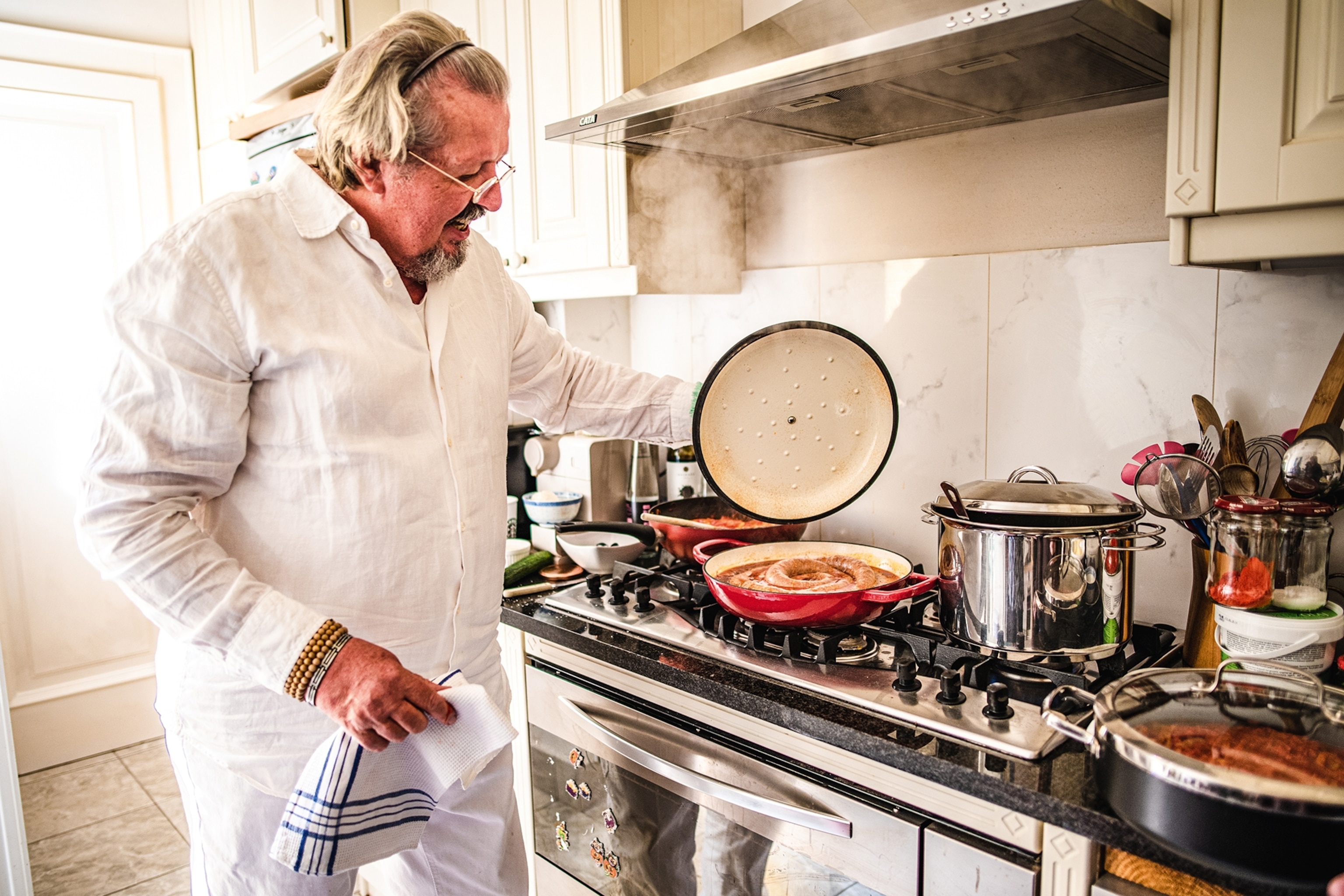
Kindred spirits
As we wait, ravenous, for the final touches to be added to the food, we pass the time at the dining table, sipping small glasses of pálinka (Hungary’s fruit brandy). András pours the various measures from a charming line-up of glass bottles originally given to András’s mother by a friend — each labelled by hand with the name of the constituent fruit and the date they were bottled. As well as the traditional plum and apricot flavours, there’s also the more offbeat strawberry and raspberry.
“In the countryside, everyone makes their own pálinka. It’s not always the best quality, but it can be,” says András. “Offering someone pálinka is a symbol of hospitality.”
And so, I drink up. I’m already well-acquainted with this powerful spirit, which works just as well as a palate-whetting aperitif as it does a relaxing digestif — although the strawberry flavour is new to me and is bright and bracing.By the time the duck liver starter hits the table, our glasses are filled with the Merfelsz Winery’s 2019 turán, a grape that’s most often used in a blend but here stands boldly on its own. “I think I was the first to come to the market with a wine of this type,” notes Gábor.
The second course is lighter — a zippy green pea soup, containing homemade croutons that have been fried in parsley, thyme, basil, rosemary, sage and lemongrass. It pairs nicely with the fruity 2017 Tsokoláta, a merlot with appealingly restrained chocolate undertones.
Then it’s time for the centrepiece sausage, served with the lecsó, which has evolved into a tender stew. There’s also mashed potatoes, slices of the sourdough bread and pickles. It’s a joyously rustic plate of food, complemented by an earthy red, the Primus 2018.
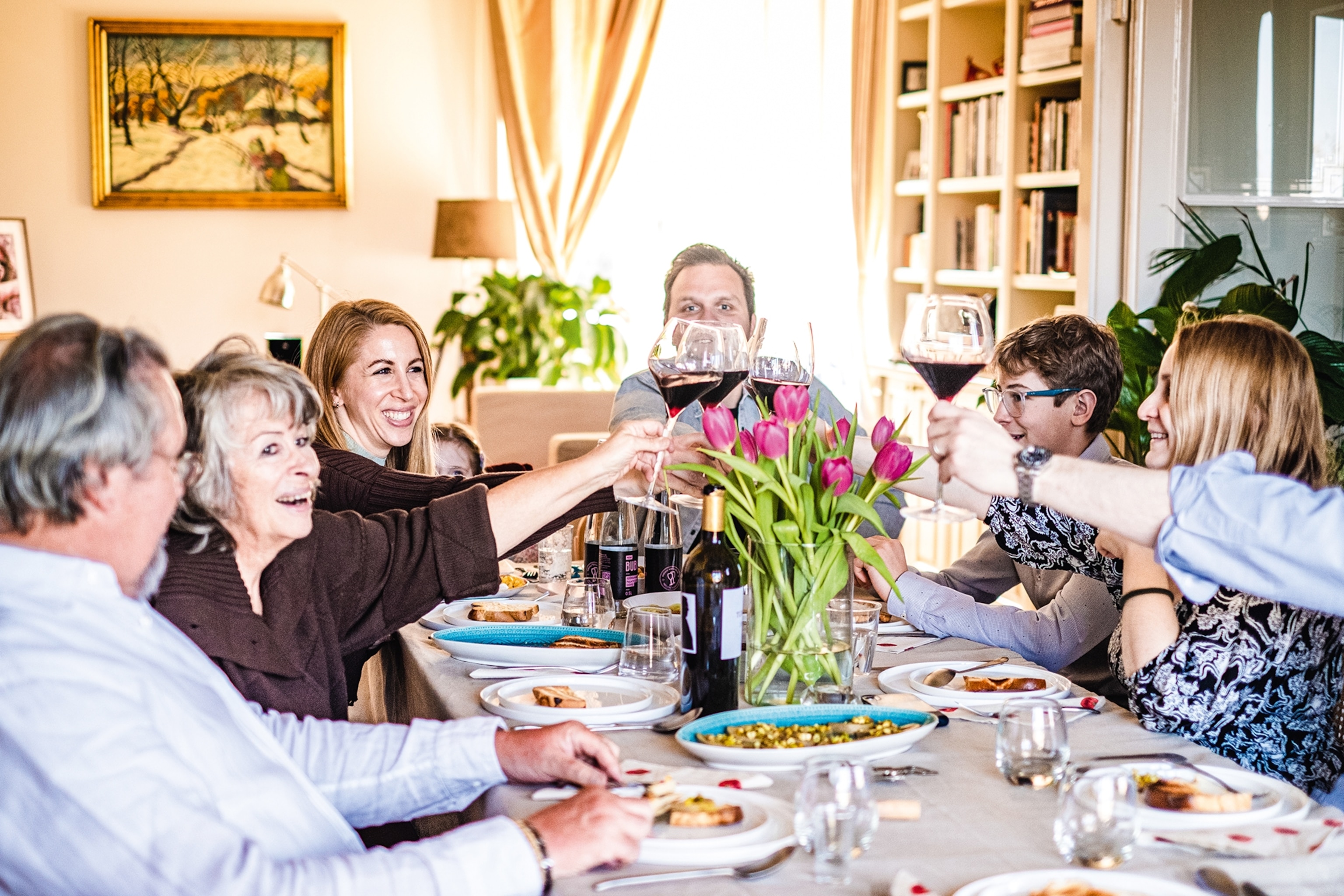
Conversation among the family comes easily and is generally light-hearted. As more sausage is speared onto plates, talk shifts from recent Netflix releases and Emil’s birthday celebrations to the enduring joy of unwrapping the red-polka-dotted package of Túró Rudi, the popular Hungarian snack that was rolled out in the late 1960s under communism and is made with a type of curd cheese called túrós, coated in chocolate.
Before long, Gábor quietly disappears into the kitchen, with the final course on his mind. He’s serving up rétes (strudel), and while Gábor often rolls out his own dough, this time, for the sake of expediency, he’s using shop-bought, paper-thin filo. To prevent the sheets from drying out, Gábor keeps them under a kitchen towel. After brushing each with crème fraîche, he stuffs them with a trio of fillings: apple, túrós and a combination of poppy seeds and cherry, two ingredients that play a big role in Hungarian baking. “Hungarian strudel,” warns Gábor, “isn’t as crispy as the Austrian version.”
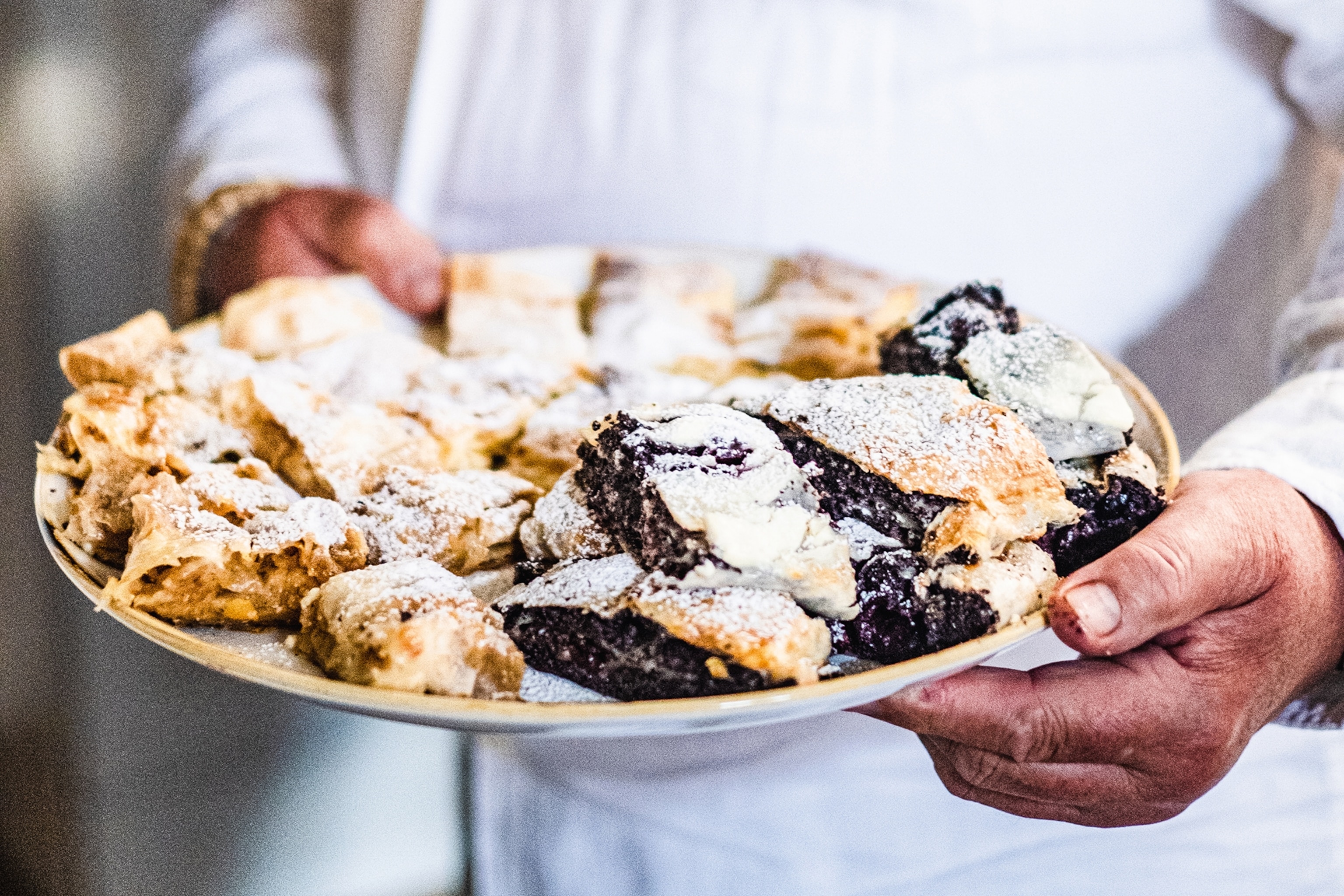
The platter of three different rétes is accompanied by tempting curls of orange peel. “We boiled them for days with sugar until they were soft,” Krisztina explains. “Typically, we serve the peels for Christmas, but dipped in chocolate.” And, in keeping with the rest of the meal, there’s a wine to accompany dessert. In this case, a Merfelsz 2019 Édesem that tastes of wild berries and honey.
As the sun starts to dim, Emil crawls under the table and a relaxed end-of meal vibe sets in. We’re all sated, but there’s still more to come, in the shape of Gábor’s finale — plums filled with cheese and wrapped in bacon. I’m expecting the filling to be the traditional goat’s or blue cheese, so I’m taken aback when Gábor tells me it’s actually trappista, a mass-produced cheese found all over Hungary. Originally created by Trappist monks, it was widely available during communism.
The dish is yet another nice surprise — the burst of hot cheese serving as a pleasant counter to the sweetness of the plums. And it’s a great way to end the meal. But still, why trappista? “For me,” explains Gábor, “it’s the taste of my childhood.”
Wizz Air flies to Budapest from Birmingham, Edinburgh, Liverpool, Gatwick and Luton. Crowne Plaza Budapest has room-only doubles from €144 (£127).
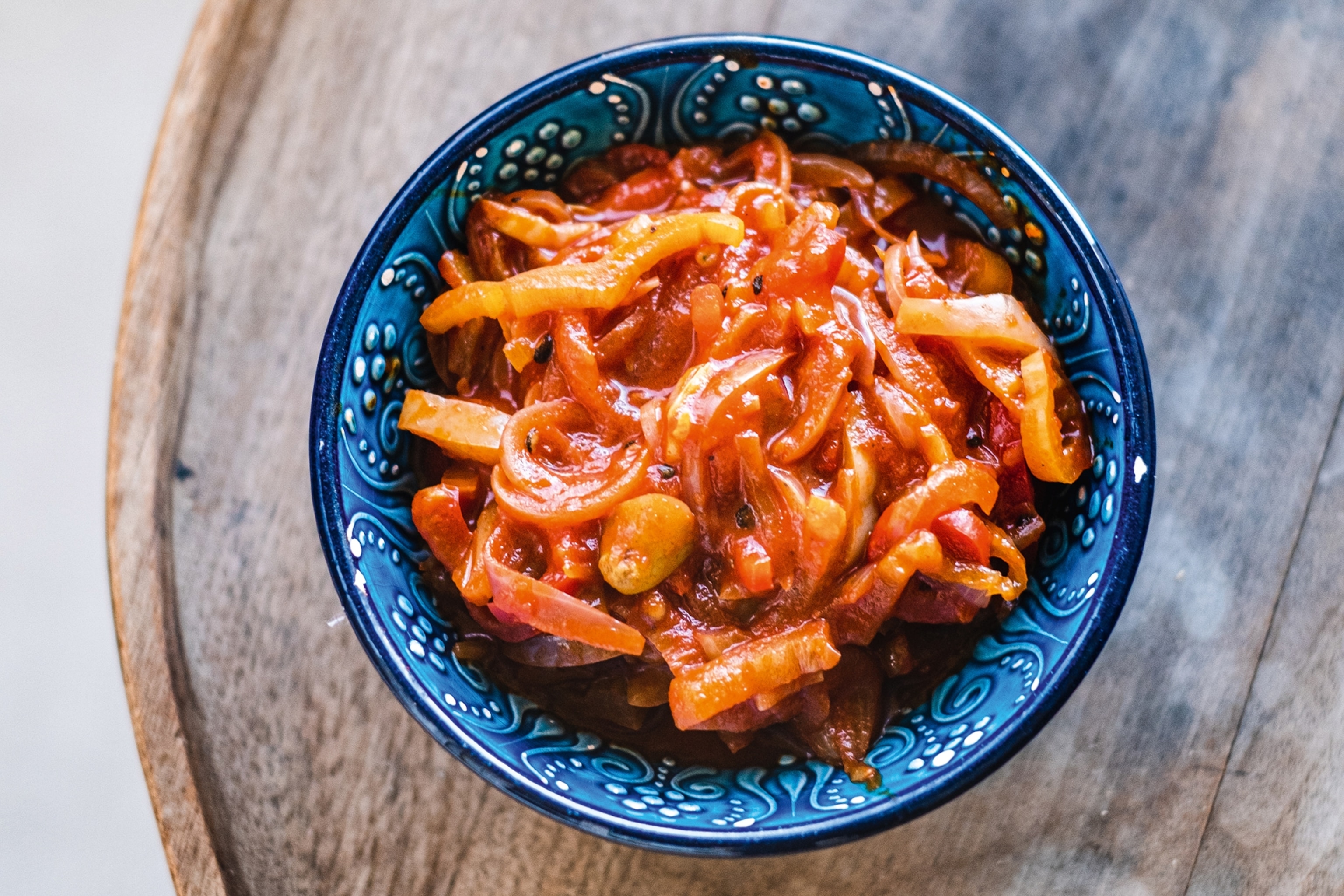
Lecsó
Serves: 8 Takes: 30 mins
Ingredients
10 peppers (different varieties, such as yellow, red, and spicy green), thinly sliced
8 tomatoes, peeled
5 onions, cut into semi-circles
1 tbsp tomato paste
1 tbsp sweet paprika paste
1 tsp paprika powder
1 tsp sugar
Six slices smoked bacon, cut into cubes
50g smoked sausage, thinly sliced
Mashed potatoes and crusty bread, to serve (optional)
Method
1. Put the bacon in a skillet and cook over a medium heat until the fat is rendered. Transfer the bacon to a plate and set aside. Add the sausage to the fat and cook for 1 min, then transfer the sausage to the plate with the bacon.
2. Tip the onions into the pan and cook until glassy, around 10 mins. Gradually stir in the peppers and cook for 3 mins, then add the tomato and mix everything well. Add the tomato paste, sweet paprika pastes, paprika powder, sugar and salt, to taste.
3. Serve alongside the sausage and bacon, with mashed potatoes and crusty bread, if you like.
To subscribe to National Geographic Traveller (UK) magazine click here. (Available in select countries only).
